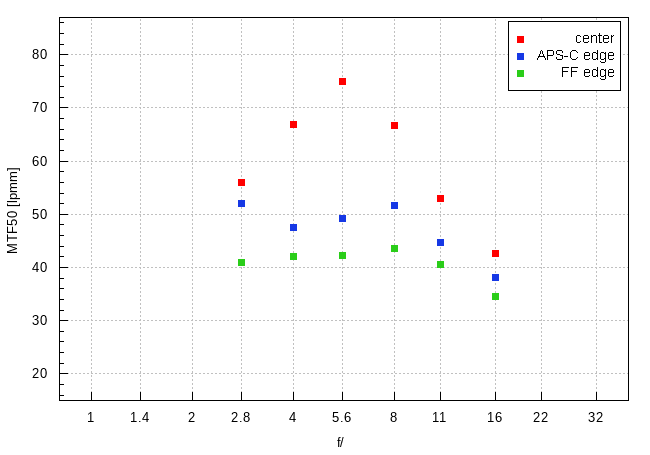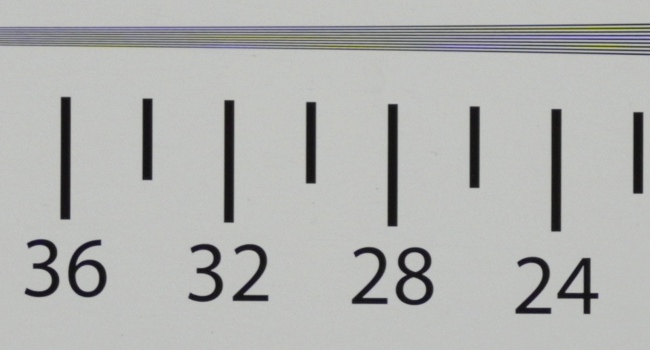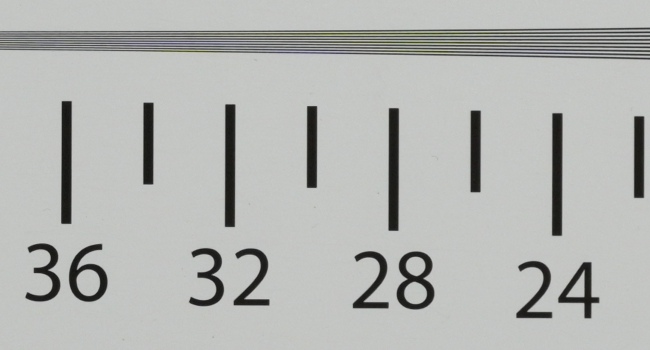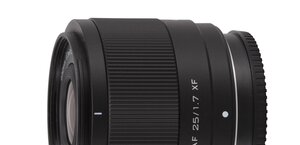Nikon Nikkor Z 28 mm f/2.8 (SE)
4. Image resolution
Let's check how the Nikkor Z 28 mm f/2.8 SE compares – its results in the frame centre, on the edge of the APS-C/DX sensor and on the edge of full frame presents a graph below.

Please Support UsIf you enjoy our reviews and articles, and you want us to continue our work please, support our website by donating through PayPal. The funds are going to be used for paying our editorial team, renting servers, and equipping our testing studio; only that way we will be able to continue providing you interesting content for free. |
- - - - - - - - - - - - - - - - - - - - - - - - - - - - - - - - - - - - - - - - - - - - - - - -
The frame centre looks really well. Already at the maximum relative aperture you see results of 56 lpmm so a lot higher than the decency level. Image quality improves very fast on stopping down the aperture and by f/5.6 you can notice values reaching a very good level of 75 lpmm. It's just 4 lpmm lower than results of the much faster Z 1.8/24 model.
Small dimensions of the tested lens make themselves felt when it comes to the atypical performance on the edge of the frame. On the edge of the APS-C/DX sensor the majority of results keep close to 50 lpmm, but by f/4.0 and f/5.6 they are a tad lower than the values you get at the maximum relative aperture. It stemms from a very specific performance of off-axis aberration and the curvature of the field. Still, as the quality of images remains good, we shouldn't complain too much.
The performance observed on the edge of the full frame sensor is also quite even, with results increasing slightly from 41.0 lpmm by f/2.8 to 43.5 lpmm by f/8.0. The lens lands on the borderline of the decency level – there are no fireworks but image quality can't be called bad either.
To sum up the Nikkor Z 2.8/28 performed in accordance with our expectations – from such a small lens you migt expect good results in the frame centre but definitely not miracles on the edge. What's more, there are no serious slip-ups so, overall, it seems Nikon did a decent job, exactly what they were supposed to do.
At the end of this chapter, traditionally, we present crops taken from photos of our resolution testing chart which were saved as JPEG files along the RAW files, used for the analysis above.
| NikonáZ7, JPEG, f/2.8 |
 |
| NikonáZ7, JPEG, f/5.6 |
 |






